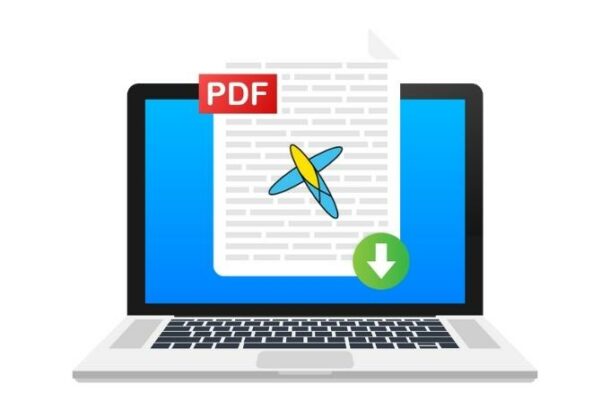by Krishna Chodipilli | Dec 10, 2020 | Agile Coaching
High performing teams seem unstoppable and driven. They deliver high value and are often supported by a high degree of commitment and participation from each member. Yet, it is common knowledge that such teams seldom commenced with the same velocity and energy that they now display. Most would agree that the team leader is the pivot whose influence, in large part, impacts the evolution of the team. Leaders who coach rather than just manage have an advantage, will find creating and sustaining high-performance teams easier and know the difference between Managing Vs Coaching.
Is a Manager Redundant?
Far from it! A manager is what he is, he manages! He manages resources and makes do with what he has to the best of his abilities. An effective manager is one who can stretch each resource given to him just short of its break point. He is the master of economy. In the real world, nothing is infinite, certainly a resource. Hence, it is imperative that whatever can be scrounged from what is available, should be done. A manager doesn’t ask for more, he makes do with what is given and creates more! It is evident; managers have an important role to play in a space where nothing is ‘too abundant’ or ‘easily available’.
Where Does the Coach Fit In?
The common perception of a manager is someone who demands, is more skilled and vested with certain authority. He is seen as someone more interested in the results of a team rather than on the development of each member of the team. While a coach, on the other hand, is focused on developing members rather than focusing on results. The coach propels individuals to do things they thought they never could from the pedestal of a facilitator and confidant. So how does the amalgamation of the two take place? It occurs in the intent. Is a manager only interested in results and not about the welfare of his team? Is the coach focusing only on individual development and not on the output expected? Notice that, it is not the roles that conflict, but the intent with which either views his position in the team or organisation that creates the block.
There is an Italian proverb “At the end of the game, the king and the pawn go back in the same box.” So it is in life. At the end of the day, the leader and lead go back to the same realities of the world. Once out your workspace, all roles change, life gets to be very different.
The lesson here is that people and their leader belong to the same world; it is only the roles they have that set them apart. The ‘being’ in the human should forever be maintained irrespective of the profile or status you enjoy. Being higher up in an org chart alone does not mean people will work hard for you. Developing high-performance teams is not easy, but leaders who recognize the importance of ‘being’ a human, not just being a good manager or coach, will achieve more. Whether you manage or lead or coach, it is all about inspiring your people to do and be more.
Conclusion
Understanding the difference between managing and coaching is essential in creating high-performance teams, mere knowledge is not enough, and one has to align intention with the outcome. Agile helps you imbibe people skills that get integrated into your work, irrespective whether you are a manager or coach. Agile creates a willful intent that enables you to be a coach and manager at the same time, thereby influencing high-performance teams that create more successful businesses. Agile Catalyst is all about managing to coach with success and coaching to manage with effectiveness.
by Krishna Chodipilli | Dec 10, 2020 | Agile Coaching
An Agile team is a body of experts from diverse fields working together to develop efficient software. It is a known fact that whenever people are working together towards a common goal, chances of conflict arising is quite certain. Conflicts or dysfunction within a team should be handled with great care as they might cost you the team itself. In this article, we shall see the various ways to handle team conflict and the dysfunction behaviour within a team. If you are experiencing such conflicts within your Agile team, then reading this article would do you good.
Initiate the Conversation
Being the leader, if you are experiencing a conflict of interest or any kind of dysfunction in your team, then you should be the one who initiates the crucial conversation amongst team members. Remember, discussions direct conflict towards a solution. However, if you ignore or delay the initiation of a conversation among the affected member’s parties, it shall impact overall team morale in a very critical manner subsequently.
Offer Conflict Resolving Sessions
Akin to personal life, we often need some professional advice while working in a team to make our relationship more cohesive and to instil motivation within the team. If you feel that your team requires professional intervention to look at things differently, then you can seek external help from competent agencies to address your need.
Promote Shared Vision and Goals
In Agile teams, if members set their personal goals over team goals, then conflicts or dysfunction is very likely to occur. As a team leader, you need to direct your team towards greater goals and a common shared vision. If all members work together to achieve a single shared goal, conflicts are least likely to exist.
Allow room for Positive Conflicts
We are not at all saying that there should be zero conflict in a team. The difference of opinions and professional disagreement among team members on functional matters is the sign of a healthy working team. Offering a difference of opinion and agreeing to disagree results in fresh ideas. As far as conflict is healthy and demonstrated over the table, it helps in building overall team morale and engaging the team towards high performance.
Focus on Equality
As an Agile team is made of the member of various departments, they possess expertise in different fields. An unbiased and fair approach to handling team member concerns creates a sense of fair play and equality within the team.
Accountability
An Agile team would be less involved in conflicts, leg pulling and backstabbing if all of them are aware that they are accountable for their actions and choices. Most of the time, it is just one member of the team causing trouble and the others stay quiet as they do not want to sabotage their relationship with him. Such a trend leads to members of the group getting to a state of no return, resulting in a vicious backlash.
Handling conflicts and dysfunction within a team is not an easy task, as you have to handle the situation without affecting the overall efficiency and morale of the team. The issues described above, are vital aids that need to be enforced to ensure a healthy and congenial atmosphere to work in.
by Krishna Chodipilli | Dec 10, 2020 | Leadership And Management
Leadership is a strategic management function, styles and traits of a leader play a critical role in the success or failure of an organisation. Leaders exercise their power at a different intensity in distinctive ways, and in doing so they display certain features and patterns. Several studies have been conducted to categorise leadership styles and decrypt the ‘success formula’ for the wider audience.
This article explores leadership styles at the broad level of how power is manifested and exercised in an organisation – whether it is centralised (Authoritarian Leadership), dismissed (Laissez-Faire Leadership) or shared (Democratic Leadership), as well as the benefits and drawbacks of these styles and their applications. There are a few other leadership styles which have gained popularity and been increasingly recognised in the recent years, they are highlighted at the end of this article and we shall explore in further attempts.
Authoritarian Leadership
An authoritarian leader is also known as an autocratic leader, it is exemplified when the leader is at the center of power who makes decisions with minimal or no consultation from the team, controls all activities in the team leaving little autonomy for members, and communicates only one-way top-down.
Authoritarian leadership can help to enhance performances and increase productivity where work is routine or require limited skills, especially in larger groups. It is considered one of the most effective leadership styles in case of the emergency where immediate decisions need to be taken – the leader has a goal to achieve and he/she can dictate people to work towards a single strategic direction. However, there is little room for creativity in problem-solving as the leader controls and dictates tasks, the team morale might be low along with high turnover due to employees’ ideas are not valued, and confusion and resentment may rise without proper communication in the long term
Laissez-Faire Leadership
Laissez-Faire in French means ‘let them do’. Laissez-Faire leaders are characterised by their ‘hands-off’ or ‘leave alone’ approach where minimal direction and supervision are provided and members of the team manage their work as they see appropriate.
As the leaders have minimum input to the daily decision-making, the laissez-faire leadership is often criticised for the indistinct role of a leader, lack of discipline and focus in fragmented teams, and little planning with limited achievement. Given said that, it is recognised as an effective way of leading mature teams with competent and experienced members, as the staff knows what they need to do and they are trusted to do their jobs, the delegation of power motivates them to take responsibilities and be innovative in finding solutions. The leaders must communicate expectations and monitor performance to warrant the quality of work.
Democratic Leadership
Democratic leadership (or participative leadership) is where members of the team share the responsibility of the leader and actively participate in the decision-making process. The power resides with the group and everyone has an equal opportunity to contribute their opinions. Whilst the democratic process focuses on group equality and the free flow of ideas, the leader offers guidance and makes the final decision.
Democratic leadership promotes communication within the team, encourages individuals to share ideas and opinions and values them. Members are more engaged and have a sense of belonging, they are committed to the success of the team, therefore, uplift the level of job satisfaction, productivity, and creativity. On the other side, democratic leadership may not respond well in workplaces where time is of essence or where members do not have the necessary knowledge or experience to contribute to the decision-making process.
Other Leadership Styles
Apart from the three categories of leadership styles, there are a few more leadership styles which are well-known, such as Bureaucratic Leadership where all rules, policies, and procedures of organisations are followed rigidly, Servant Leadership which prioritises the needs of the team, Charismatic Leadership where the success of the initiatives is closely linked to the presence of the leader, Transformational Leadershipwhich motivates staff by creating an environment of intellectual stimulation, Transactional Leadership which manages activities through a clear exchange of command and task implementation, and Situational Leadership where the leaders adopt different styles depending on the environment.
In summary, despite the different categories of leadership styles, there is a certain level of overlap between some of them. It doesn’t matter how we categorise them, it is important to remember that there is no “one-size-fits-all” leadership style, each type has its strengths and weaknesses and we need to mix-and-match and find what works for us and desirable for the team in that particular scenario. Besides, we need to keep on learning and progressing with the changing environment and evolving management theories, as Vince Lombardi has put it, “leaders aren’t born, they are made, and they are made just like anything else, through hard work.”
Find out how Leadership Tribe can help you to improve your leadership at both individual and corporate level, contact us now or find out more about our courses and coaching services.
by Krishna Chodipilli | Dec 10, 2020 | Agile Coaching
When you get Agile literate, you can observe a clear distinction between Coaching and Mentoring. While we can easily make a differentiation between the two by semantics and the English language, the subtlety of the variations that exist between the two can only be derived by engagement and experiential learning. This is where Agile comes in, for Agile is ‘ about continuous learning on the go – to increase knowledge, performance, innovation and competency’. Let me amplify the same by highlighting the subtle differences between Coaching and Mentoring from an Agile perspective: Do you need enterprise agile coaching in UK? Leadership Tribe will give you the best solution as per your requirement and budget.
The Engagement Environment
Coaching is oriented towards the outcome of a particular skill or task. The focus is on specific, well-defined issues within a larger framework. For example, to successfully direct team building and strategic thinking workflow, one would need a content expert (coach) who is capable of enabling the coachee on how to develop these skills within the larger framework of the organisational vision and project mission. Hence, the engagement is largely confined to the professional arena. Mentoring, on the other hand, is relationship dependent and the boundaries between personal and professional spaces get blurred. It establishes a safe environment where the mentee is free to express issues that affect his or her professional and personal space. Although specific learning goals or competencies may be used as a basis for creating the relationship, the mentoring engagement goes beyond the organisational environment and delves further into the realms of personal history, self-expression, self-actualisation, and self-esteem.
Time-Based Sensitivity
Coaching is sensitive to outcomes which need to be addressed on priority; time is of the essence to create desired states of nature. Coaching can be successfully delivered in a short time interval, maybe to address a specific issue over a few sessions. Our Agile coaching at UK continues for as long as is required, depending on the objective of the coaching goal established.Mentoring is time insensitive. Mentoring demands a certain level of maturity in the relationship, which is time-dependent where the intent is to first establish a common ground based on trust, compassion, and security. Successful mentoring relationships last for a year to a lifetime, often progressing into the latter.
Nature of Conduct
Coaching is performance-centric and transactional, intending to improve the competency and performance of the job for a remuneration/predetermined consideration. This involves either enhancing current capabilities or acquiring new skills to refine them for an agreed price. Once the coachee successfully acquires the necessary competence, the coach has fulfilled his transaction and is paid for it. Mentoring is growth-centric and transformational, intending to develop the individual capacities to meet an unforeseen and uncharted future. This distinction differentiates the role of the immediate superior and that of the mentor. It also mitigates the occurrence of any conflict between the employee’s superior and the mentor.
Feasibility of Structure
Coaching does not mandate a design structure. Coaching can be conducted in situ on any given topic. If a company seeks to provide coaching to a large group of individuals, a fair amount of design would then be required to determine competency areas, expertise need, and assessment tools. However, this does not necessarily require a long lead-time to implement the coaching program. Mentoring, on the other hand, requires a design phase to determine its core strategic purpose. Mentoring needs a structure to establish and create the focus areas of the relationship, the specific mentoring models and the specific components that will govern the relationship, especially the initial matching process.
Scope of Involvement
The coachee’s immediate superior is a pivot in the coaching process. She or he communicates to the coach with appraisals and feedback on areas in which his or her employee requires coaching. The coach uses this involved information to help him structure the coaching process. In mentoring, the scope of the superior is limited in influence. Apart from offering suggestions to the employee on how to best use the mentoring experience or in providing recommendations to the matching committee on what would constitute a good match, the superior has no access to the mentor and they are not involved in any way in the mentoring relationship. This helps maintain the mentoring relationship’s objectivity and confidentiality.
Coaching Helps When
- When the need is to develop specific competencies in a specific period using performance management tools and involving the management.
- When a situation arises where employees are not able to deliver on expected outcomes due to issues of perceptions and lack of empathy.
- When it is time to orient mindsets and impose a belief change towards a new system or program.
- To facilitate a small group of individuals in need of increased competency in core areas.
- When an executive seeks assistance in acquiring a new skill as a value addition to his professional competencies.
Mentoring Helps When
- There is a need for succession planning.
- Removing cultural barriers which impinge on the functionality of employees.
- When there is a need to transform employees into more accomplished and self-driven individuals.
- When there is present a culture to nurture talent and create islands of excellence that will define the future of the company and the communities it impacts.
- To fulfill the need to be more holistic and fulfilled in life and living.
Conclusion
As an Agile Coach, one to has to work as an Agile Coach and Mentor, and it should be about the client’s outcome and agenda. Understanding the subtle difference between the Coach and the Mentor from an Agile perspective will enable the leader/business head to implement processes that would enable to achieve value-driven objectives based on a sound culture of cohabitation and collaboration between all the working mechanisms of his business/enterprise.
by Krishna Chodipilli | Dec 10, 2020 | Agile Coaching
Effective leaders are the building blocks of success for any organization for achieving productive business results. Great leaders can prove to be great coaches who can lead the individual employees, teams and business units to reach the pinnacle of success. The seasoned leaders already have the necessary ingredients for becoming successful mentors or coaches like patience, strong determination, confidence, communication skills, leadership skills and other such qualities. For any given organization, the main challenge is to train the leaders to be effective coaches. The coaching skills of a trained leader have a great impact on the performance of the employees in an organization, and they can make their performance good or make it bad. A leader-coach is no different from a sports coach who will motivate and inspire his/her team members to achieve victory in all business endeavours.
“The goal of coaching is the goal of good management: to make the most of an organization’s valuable resources.”- Harvard Business Review
Some of the qualities that a leader-coach must have been
The best strategy
Devising a working strategy to improve the overall performance of an organization is imperative for the leader-coach and while doing so, he/she will teach mental models and frameworks that will increase the intellectual capability of the team. The leader-coach will brainstorm with the peers in working out, what is good for the company? What worked out best? What were the hindrances? & so on. A leader-coach will teach the subordinates to have coordinated efforts in reaching common objective to achieve overall excellent performance.
Increased energy levels
A good leader-coach will always be pumped up with energy and will have a strong passion for his/her area of work. Filled with positive vibes, the leader-coach will always hone positive attitude and endless affinity towards work among the peers. The success of a leader-coach is reflected in the sense of optimism and confidence instilled in the teammates.
Should be humble & self-aware
Humility is a trait which comes in nature of the leader-coach and the leader-coach should put the success of the teammates as a front-runner when compared to the personal interests. They care more about the improvement of the teammates instead of development of self. Being self-aware makes them focused on their core objective of achieving impeccable progress for their team. The leader-coach also know how to side-line them self when it is the turn of a fellow teammate to be in limelight.
Unparalleled expertise & skill
The leader-coach must be a jack of the game if the leader-coach wants to guide the subordinates to achieve success. Having explicit skills, the leader-coach is seen as a torch-light leading to the jewel of fame, whom every subordinate will follow with complete faith. The leader-coach must have deep knowledge of the core elements of the work and with this high authority, he can guide the teammates to excellence. With one’s experience as a top performer, the leader-coach will set the benchmark for performance for his peers and pushes them to achieve optimal results.
Interested in individual member growth
A successful leader-coach would help individuals in the team to achieve their individual goals and to identify their strengths and weaknesses so that they can contribute positively to the team’s success. By giving them challenging projects in their fields of interest the leader-coach will expand their professional knowledge and help them grow both personally and professionally. In each walk of the individual team member, the leader-coach will go hand in hand being there for the team member in his/her failure or success.
Commands loyalty and shows care
The leader-coach sees the true potential of each individual of the team and makes other subordinates to acknowledge these strengths and coordinate with them to make them the strength of the team. All the team members are taught to respect each other’s views and contributions to the team and work together as a coherent unit. A leader-coach creates an amicable environment for individuals, where there is fair play and each of the person’s dignity is respected.
How will the leader-coach train his/her peers?
The leader-coach will decide whether a coaching conversation is effective or mentoring or a direct approach has to be adopted which may suit the team members.
- Needs to identify the perfect mental condition required to be present in the team member to be receptive to difficult conversations.
- Help team members in identifying their blind spots or resistance that is preventing them from giving their best performance.
- Use techniques of coaching which is effective in solving people’s problems and to change their minds.
- Learn the technique of listening from three centres in the nervous system which will let you share strong reflections and ask powerful questions creating a deeper reality which will have a permanent positive effect on the minds of the teammates resulting in increased organizational productivity.
- By practising strong presenting techniques, the leader-coach can have a control over his/her emotions while coaching the peers.
- He/she will devise a development plan for achieving improvement of the subordinates.
Hence, we can infer that being a leader-coach requires a whole lot of efforts from one’s side and only highly effective leader-coaches can lead a team to succeed professionally and contribute to the improvement of the team and the progress of the organization.
Using a unique feedback technique at the beginning of the coaching session, the leader-coach will make it clear regarding the desired results expected from the session to his/her teammates.






